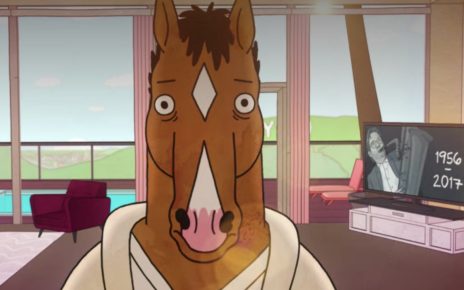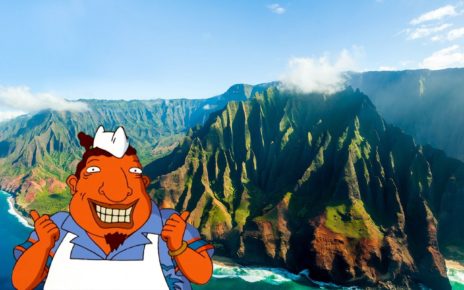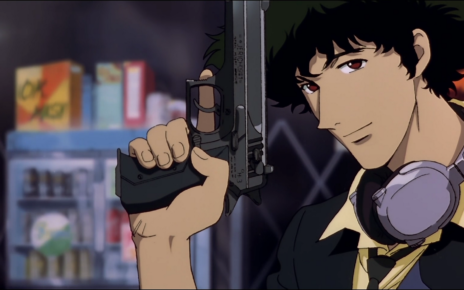Pause on almost any frame of animation and you’ll see a wonky mouth, a scrunched-up expression, a smear of body parts across the screen or an extreme pose that demands your attention. When animators go to work, our job is to take narrative and make it visual, exciting, and clear. Every frame tells a piece of the story, and every drawing has its place.
With the increased availability of animation online, those frames have become huge pieces of internet meme culture. Reaction images of a mocking SpongeBob SquarePants, a vintage Spider-Man lying seductively on train tracks, or a skeptical Philip J. Fry (all pictured above) are used all across social media and forums to make strangers laugh and form common bonds over shared culture.
What’s unique about the use of animation as memes, as opposed to live-action or stock photos, is the way it exposes us to the inner workings of the medium. An animator may spend hours getting a particular piece of character animation right. Memes taken from animation are often in-between, smear (an in-between blurry frame to convey motion), or gag drawings. Without getting technical, all of these are inherently quick, often transitional drawings. They convey character and personality, which makes them great for memes.
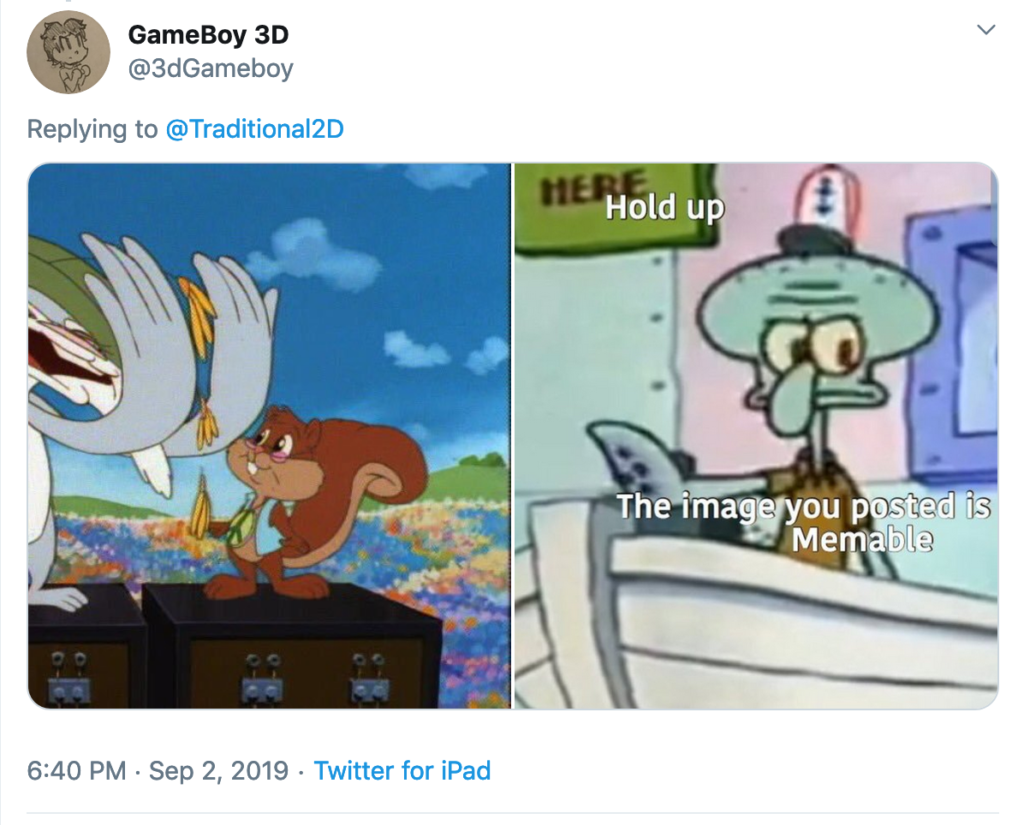
SpongeBob SquarePants is probably the biggest contributor. The show’s Know Your Meme page has over a dozen confirmed entries, while other cartoons from the era—Fairly Odd Parents, Ed, Edd n Eddy, and Dexter’s Laboratory—have only a few.
For any fan, it’s clear that SpongeBob is an incredibly cartoon-y animated show. The animators use visual exaggeration to make a joke hit harder. The show was also immensely popular for a generation of kids (including myself) who were starting to log on to the internet as they were watching the show. Those two factors combined to make SpongeBob one of the most meme’d shows around. Newer generations of even more internet-literate kids are discovering it fresh through Nickelodeon’s infinite reruns.
Just recently, a new SpongeBob image made the rounds on my timeline: the “Ight Imma Head Out” meme. It’s used to wash your hands of any situation, but the still frame was originally taken from a scene of SpongeBob sitting down (“The Smoking Peanut,” Season 2, Episode 32). It’s been recontextualized based on what the still frame conveyed, not the overall movement of which it was part.

On the opposite end of animation history is Looney Tunes, which is hard to see anywhere except online or on DVDs. Another particularly cartoony show, Looney Tunes is full of expressive action ripe for memeage. Recently, cartoonist Bob Flynn analyzed how the Bugs Bunny “No” meme was rotated and cropped to get the meme’d image.
The “Big Chungus” meme is a great example of how a five-second gag from a 1941 Looney Tunes short got remixed by a new audience and came back to influence the original creators. It’s a drawing of Bugs Bunny puffed out as he makes fun of a portly Elmer Fudd. He holds the pose, mocks Elmer, and then goes back to being Bugs again.
The image first appeared online in 2017 and was later paired with the phrase “Big Chungus” (a separate meme) in March 2018.
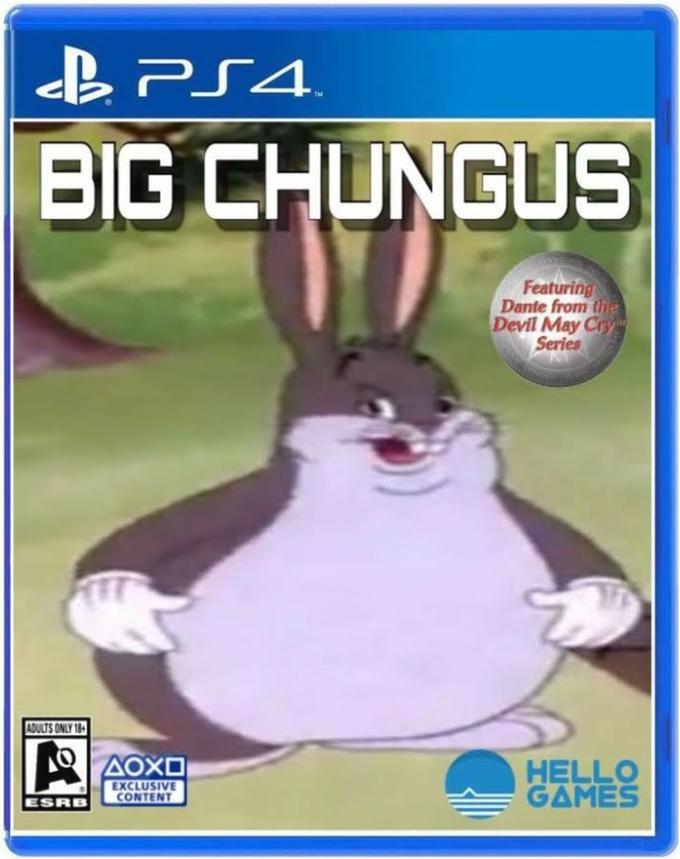
It got Photoshopped onto video game covers and passed around enough that an unwitting mom asked a GameStop employee whether the store had a copy of “Big Chungus.” The meme came full circle when WB Kids posted a YouTube video of the original cartoon with a preview frame featuring the meme on Jan. 7, 2019. It’s hard to believe that this particular Looney Tunes short was uploaded for any other reason than the meme’s prominence.
Nickelodeon took an even more drastic route to acknowledging the meme status of Spongebob. In April 2019, they started a merchandise line of vinyl toys based off the most popular Spongebob memes like “Handsome Squidward,” “Surprised Patrick” (seen below on my desk), and “Caveman Spongebob.” The toys quickly sold out.

None of those toys were based on traditional marketing materials for the show. They were highly animated drawings adopted and loved by fans—so much so that the company took notice.
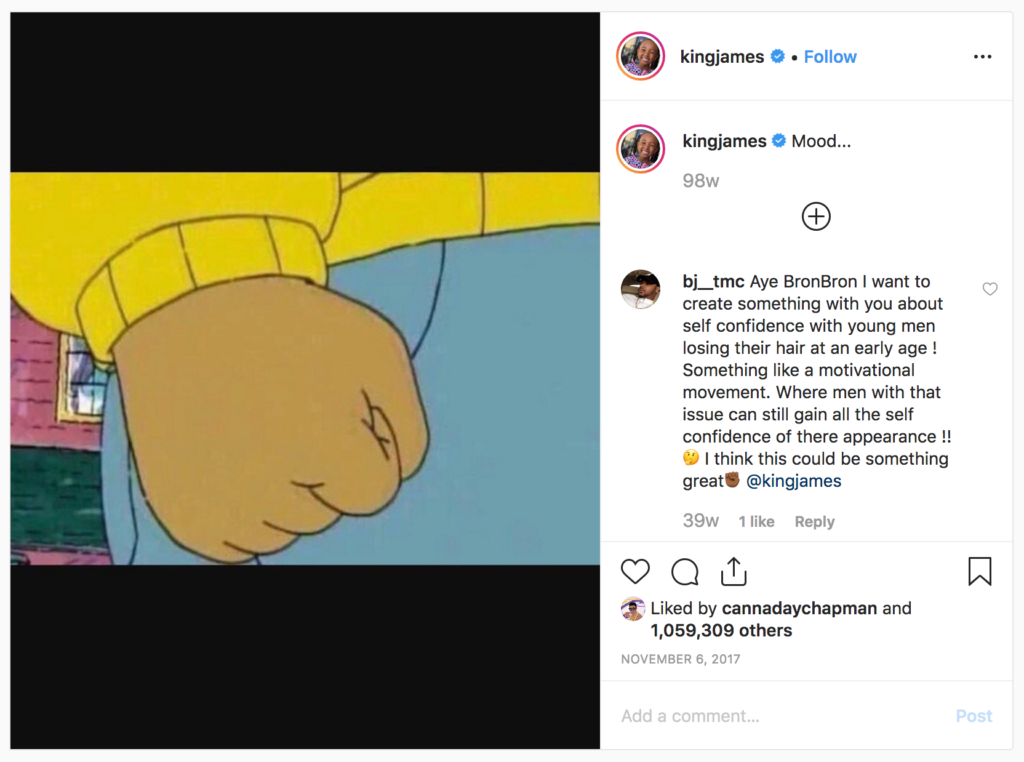
The “Arthur’s Fist” meme is another image that broke through its internet community and became a piece of mainstream pop culture. What started as a tweet from Twitter user @AlmostJT saying the image had “so many emotions in one fist” led to an Instagram post from LeBron James and a Halloween costume by John Legend.

It’s worth noting that the examples here are only a sliver of the meme culture around animation. Communities like Black Twitter have their own stories to tell about about how memes are created and later co-opted by mainstream forces. What I’ve written is particularly Western-centric, and incredible work can (and should!) be written about all of the other subgroups around the internet and the way they use animation to make culture.
For so long, animation was just flashes on a screen. We could appreciate it as a whole, but not the parts. All of these memes give us a new way to look at the work of animators and appreciate their craft. In a less academic way, it also gives us as fans a way to claim the culture as our own, remake it, and create new joy and comedy.
Thanks for reading The Dot and Line, where we talk about animation of all kinds. Don’t forget to follow us on Twitter and sign up for our newsletter.



